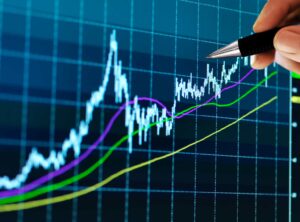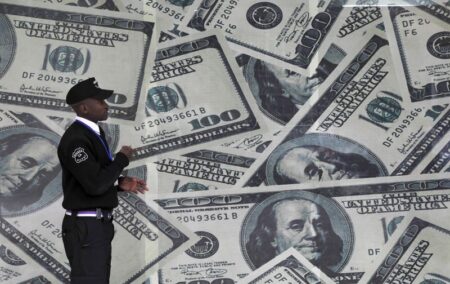By Hari Kishan and Sarupya Ganguly
BENGALURU (Reuters) – A resurgent dollar is more likely to stay strong than not over the coming months, according to foreign exchange strategists polled by Reuters, as markets reassess how soon the Federal Reserve may cut interest rates.
Bucking a brief downward trend that started late last year, the gained nearly 2.0% in January alone. Various Fed officials pushed back on rampant market speculation for a rate cut in March, with the probability now down to less than 20% from a peak of around 90%, according to rate futures.
A blowout U.S. jobs report for January, clear hints from the U.S. central bank after the end of a policy meeting last week, and a follow-up television interview with Fed Chair Jerome Powell have quashed most remaining hopes of early rate cuts.
The latest data from the Commodity Futures Trading Commission already showed currency speculators paring their short dollar bets for a third week in a row, a trend that is likely to continue.
A near 80% majority of foreign exchange (FX) strategists, 52 of 67, in a Reuters Feb. 1-6 poll said the greater risk to their six-month forecast was for the dollar to trade stronger than they predicted. The remaining 15 said the greater risk was for it to be weaker.
“The race has started, with the market at first questioning whether the dollar would continue weakening at the beginning of this year. Now I think they’ve come to believe the strong dollar should be closer towards leading the pack,” said Paul Mackel, global head of FX at HSBC, adding that the speed at which central banks cut “will dictate currency performance.”
“Overall, we believe in a strong dollar this year, but not an exceptional one like in 2021 and 2022.”
With growth in most major economies expected to lag the U.S. and rate differentials favoring the greenback, most strategists say it will be an uphill task to dethrone the dollar in the short-term.
However, the median forecast among 76 strategists surveyed showed the dollar would weaken from current levels against most major currencies in the next three, six and 12 months, an outlook analysts have held for about a year.
“Does it make sense for the market to be pricing similar cumulative rate cuts from the Fed, ECB (European Central Bank) and many other central banks … we don’t think so,” noted George Saravelos, head of FX research at Deutsche Bank.
“The real debate is not if the Fed cuts a few weeks sooner or later, but if it cuts by less or more than the rest of the world over the next two years. We continue to see the risks skewed towards less Fed easing and, therefore, in favor of the USD.”
The euro, trading around $1.07 on Tuesday, was expected to gain more than 4.0% to change hands at $1.12 in 12 months. The Japanese yen was forecast to strengthen more than 9.0% from current levels to 135.50/dollar.
Median views for most major currencies were little changed since December.
(For other stories from the February Reuters foreign exchange poll:)
Read the full article here












